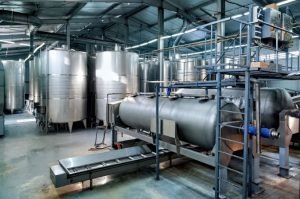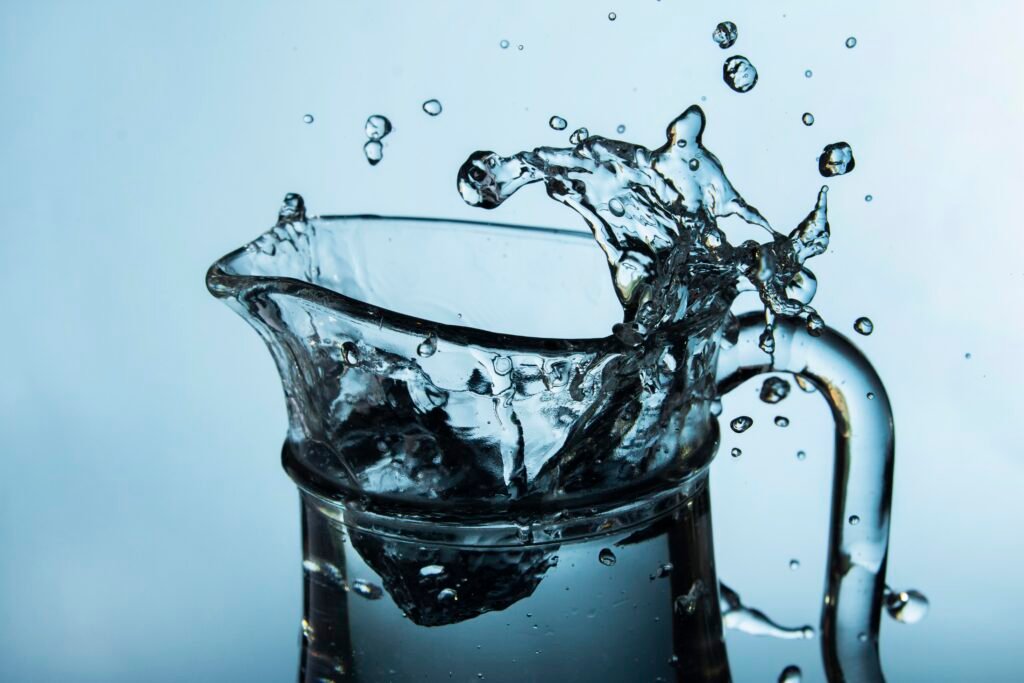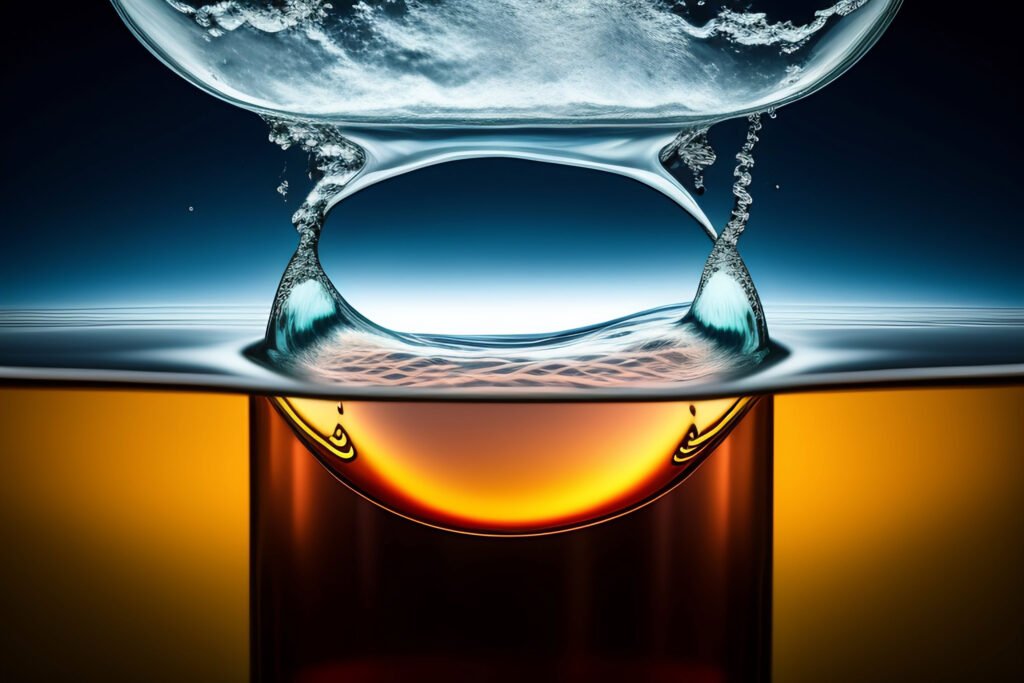DM Water Plant: Process, Principles, and Industrial Uses
Discover DM Water Plants: learn about the process, principles, and key industrial uses of demineralized water.

DM Water Plant Process
DM (Demineralized) water, also known as deionized water, is a crucial resource in various industries where purity is paramount.
The DM water plant process is designed to remove mineral salts and other impurities from water, producing highly purified water essential for many industrial processes.
Raw Water Intake: The process begins with raw water from a natural source such as a river, lake, or underground well. This raw water contains dissolved minerals and impurities.
Pretreatment: The raw water undergoes pretreatment to remove suspended solids, organic matter, and other impurities that could interfere with demineralization. This may include processes like sedimentation, filtration, and disinfection.
Ion Exchange: The heart of the DM water plant is the ion exchange process. This process uses ion exchange resins to remove dissolved ions such as calcium, magnesium, sodium, and chloride from the water.
The resins contain functional groups that exchange ions in the water with ions of similar charge in the resin.
Regeneration: Ion exchange resins lose their efficacy over time due to ion saturation. To regenerate the resins, a concentrated solution of chemicals
(typically sodium chloride for cation resin and hydrochloric acid for anion resin) is passed through the resin bed to replace the adsorbed ions. The regenerated water is then flushed out, and the resin bed is ready for the next cycle.
Mixed Bed Ion Exchange: For ultra-pure water applications, a mixed bed ion exchange unit is used. This unit contains a mixture of cation and anion exchange resins that are intimately mixed to provide a higher level of purity than can be achieved with separate cation and anion exchange units.
Polishing: In some cases, the demineralized water may undergo further treatment, such as ultrafiltration or reverse osmosis, to remove any remaining impurities and ensure the highest level of purity.
Storage and Distribution: The demineralized water is then stored in tanks and distributed through a network of pipes to the various points of use in the industry.
Custom-Made DM Water Plants by Fluid Systems: Tailored Solutions for Pure Water Needs
Fluid Systems is a leading provider of custom-made DM (Demineralized) water plants, offering tailored solutions to meet the specific needs of industries requiring high-purity water.
With a focus on innovation, quality, and reliability, Fluid Systems designs and manufactures DM water plants that are efficient, cost-effective, and environmentally friendly.
Let’s explore what sets Fluid Systems’ custom-made DM water plants apart:
Customization: Fluid Systems understands that every industry has unique requirements when it comes to water purity. Their team of experts works closely with clients to understand their specific needs and tailor a DM water plant solution that meets those needs precisely.
Whether it’s the capacity, efficiency, or the level of automation required, Fluid Systems can customize their plants accordingly.
Advanced Technology: Fluid Systems employs the latest technologies in their DM water plants to ensure optimal performance and efficiency.
From advanced ion exchange resins to state-of-the-art regeneration systems, Fluid Systems’ plants are designed to deliver the highest quality demineralized water.
Quality Assurance: Fluid Systems is committed to delivering the highest quality products to its customers. Their DM water plants undergo rigorous testing and quality assurance processes to ensure that they meet the highest standards of performance and reliability.
Environmental Sustainability: Fluid Systems recognizes the importance of environmental sustainability. Their DM water plants are designed to be energy-efficient and environmentally friendly, helping clients reduce their carbon footprint and comply with regulatory requirements.
Comprehensive Support: Fluid Systems provides comprehensive support to their clients, from initial consultation and design to installation, commissioning, and maintenance. Their team of experts is always available to provide assistance and ensure that their DM water plants perform optimally.

Operating Principle of DM Water Plant
A standard two-bed DM water plant, also known as a DM plant, is composed of pressure vessels with FRP/MS rubber linings that are connected in series with internal fittings.
The strong basic ion exchange resin absorbs the corresponding acid in the next vessel after the positive salt ions are converted to hydrogen ions by the high capacity strongly acidic cation exchange resin of the first unit.
At 250°C, the water produced by this method has a conductivity of less than 20 µS/cm and a total dissolved solids content of less than 10 ppm.
Mixed bed deionizers, which are built to create high-purity treated water, can create even higher-purity water. To obtain extremely pure water, they can be used as polishing units after a two-bed DM plant.
Single-column units called mixed bed deionizers are filled with a combination of very basic and strongly acidic cation exchange resins.
De-gasifiers
The degasifier unit is a component of a demineralization plant (DM plant), for which we offer a comprehensive selection of degassers to fit into packaged or specially designed DM water plants.
Installing degassers downstream of the cation unit removes carbon dioxide, reducing the pressure on the anion unit. This reduces the amount of chemicals used, saving money.
Standard units include a mild steel rubber-lined or fiber-reinforced plastic tower, a stainless steel blower, and a transfer pump. As an option, more blowers and pumps are available.
Mixed Bed De-mineralises
High levels of purity in treated water are achieved by using mixed bed de-mineralizers downstream of the DM unit. We provide mixed bed demineralizers that are pre-packaged and made to order.
These mixed bed units come with chemical regeneration tanks, self-supporting skid foundations, complete service and regeneration plumbing, and a single vessel containing a combination of cationic and anionic resins.
Condensate Polishing
As part of the steam cycle, the condensate polisher is a device that filters condensed water from steam. Our excellent ion exchange resins for condensate polishing are excellent at absorbing corrosion compounds from the condensate stream.
Ion exchange technology is commonly used in this polishing process to remove suspended debris and trace dissolved minerals.
Commonly used as a component of condensate systems in power plants, it prevents chemical breakdown and clogging early in the power cycle, which can lead to reduced unit efficiency and potential mechanical damage to critical generation equipment.
Uses of DM Water Plant
Demineralized water has many industrial uses because it does not contain any impurity minerals. This is because it is not likely to contaminate or spoil other materials or substances.
1. Laboratory Applications
Water is not just an essential bodily fluid. It is also a very prevalent and important material in all laboratories. It is used as a solvent, in preparing buffer solutions, in diluting chemical concentrates, and as a container and equipment cleaner. However, these procedures cannot be performed using regular drinking water.
In scientific settings, pure water is especially important because it:
Ensures that data obtained is precise
Analyzes, tests, and ensures accuracy of finished goods
Will not leave any unwanted residue on formulas or delicate equipment. Many laboratory applications can easily become useless due to certain contaminants in water.
DM water is used to ensure that chemical reactions remain accurate, the environment remains sterile, and the results are reliable for these reasons. The following works have been done in this area:
- As a solvent for making buffers and solutions, among other things
- To prolong the life of the autoclave’s chamber and steam generator
- To ensure that no contaminants are left on glassware and other delicate equipment
Demineralized water is not completely pure, even though it is free of most ionic contaminants and mineral salts.
This is because organic contaminants, such as germs, are not eliminated by the deionization process because they are without charge.
Since these impurities can also cause problems for laboratory procedures, demineralized water is sometimes replaced by distilled water where strict specifications apply.
2. Automotive Industry
In the automobile sector, calcium content in water often causes problems as it can lead to a build-up that can eventually rust metal parts.
Since demineralized water has had all the minerals removed, including calcium, it is widely used in the automotive sector as a corrosion prevention technique. Demineralized water is most commonly used for:
3. Pharmaceutical Manufacturing
Pharmaceutical-grade water is used extensively in the manufacture and production of many pharmaceutical products, such as the following, as a raw material, ingredient, and solvent.
- Analytical reagents; compounding articles
- Pharmaceutical active compounds (APIs)
- Pharmaceutical active intermediates (APIs)
Demineralized water, sometimes referred to as “aqua”, is used in pharmaceutical and cosmetic products to help regulate the quality and safety of those substances.
4. Electronics
Cleaning circuit boards is a routine and important process in the electronics industry. This is because a substance called flux is left after the board is made.
This must be removed from the board as it can cause corrosion and reduce its lifespan.
Given its close resemblance, demineralized or deionized water is commonly used to wash circuit boards. Demineralized water is used here for the same purpose as in the car sector.
Ordinary tap water leaves salt residues when it evaporates and should not be used to wash circuit boards because it contains impurity ions.
Eventually, these salts will react with regular air to cause surface corrosion. Additionally, there is a possibility that the residues will short-circuit the board.
Therefore, to avoid long-term reliability problems that arise when salt residues are allowed to accumulate, circuit boards are cleaned with demineralized or deionized water.
5. Other Uses of DM Water Plant
In addition to the automotive, pharmaceutical, electronics, and laboratory sectors, demineralized water is a highly flexible commodity that is also important in many other industries:
- It is employed in the petrochemical industry to treat cooling tower blow-down
- Steam applications, such as steam raising and steam irons, employ it.
- It is used in fire extinguishers along with water mist.
- It is used in aquariums to regulate the pH levels of the water
- It is utilized in commercial window cleaning for shining results.
Demineralized water is essential for scientific and industrial work, as evidenced by its wide range of applications.
Still, it is important to remember that humans should not consume demineralized water due to the lack of minerals.
Although it may taste good, demineralized water can eliminate existing minerals and electrolytes from the body and prevent us from getting the minerals necessary for a healthy diet.
Conclusion
understanding DM Water Plants and their process, principles, and industrial uses is essential for various sectors such as pharmaceuticals, electronics, automotive, and more. The ion exchange process used in DM water plants ensures the production of high-quality water, free from mineral salts. This purified water plays a crucial role in maintaining the integrity of experiments, products, and equipment in laboratories, as well as in preventing corrosion in automobiles and ensuring the quality of pharmaceutical and cosmetic products. Additionally, DM water finds applications in power plants, refineries, and various other industries, showcasing its versatility and importance in modern industrial processes. Despite its benefits in industrial settings, it’s important to note that demineralized water is not suitable for consumption due to its lack of essential minerals.



